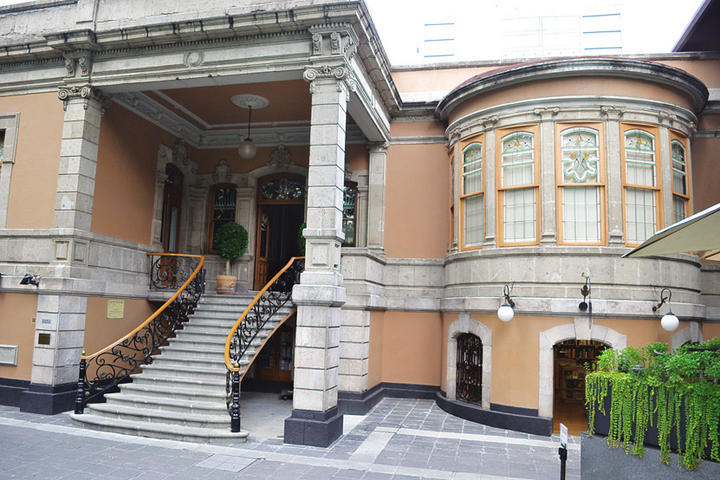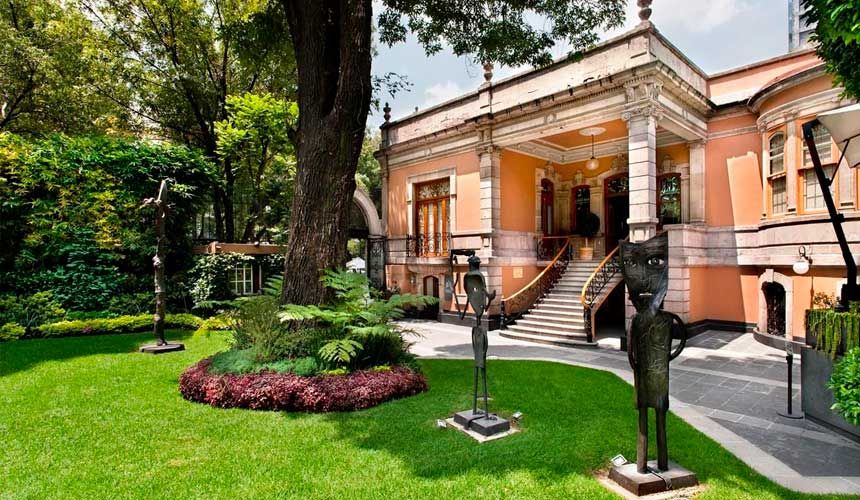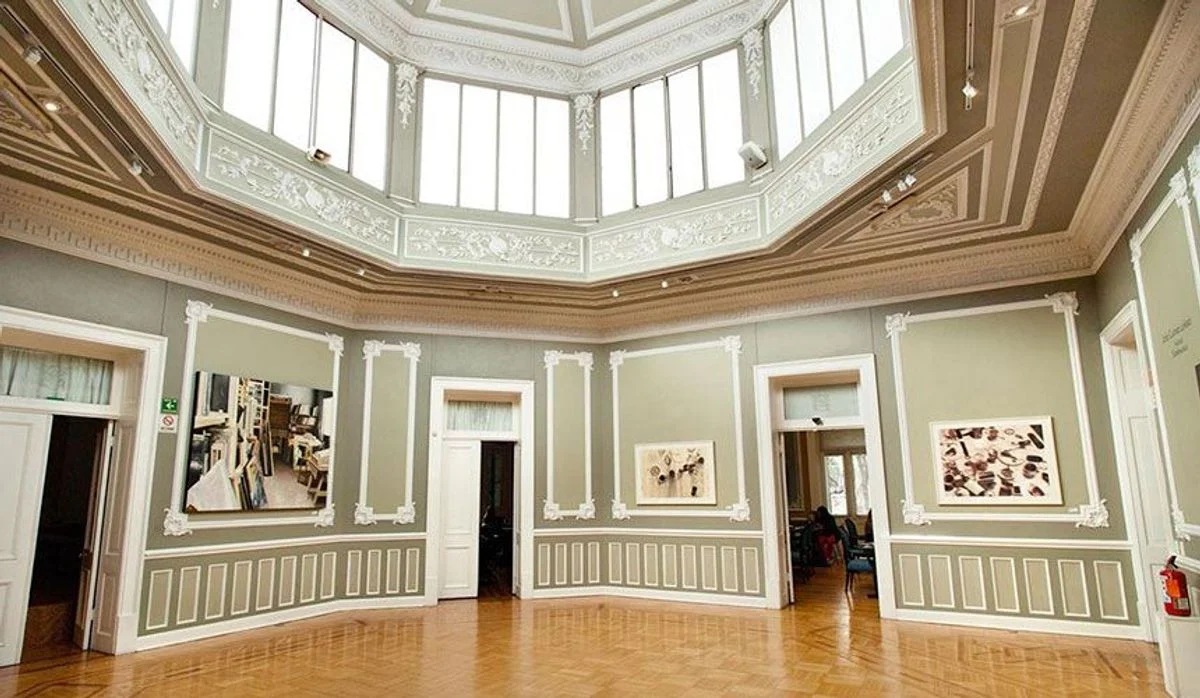Is Roma worth visiting? A Look into the History and Architecture of Mexico City's Trendy Neighbourhood
- May 30, 2024
- 6 min read
Updated: Jun 22, 2024
If you say I am going to Mexico city, you will probably get the response "Make sure you visit Roma" So in a city with so much beautiful architecture and culture is Roma a place that should be on your visit check list?
Thats is what we are going to explore today. How? The usual way we do it here at Backpackers Blueprints, by starting at the beginning. You see part of the charm of the area is its vast array of architectural styling from the turn of the 20th century to circa 1980. Styles including Art Nouveau, Art Deco and Functionalist Architecture can all be found in this time frame and they all exist here in Roma. Eventually a downturn would take place circa 1950 before a second coming would turn the tide again in the favour of this now cool, boho neighbourhood.

Is Roma worth visiting? Introduction
Lets start by zooming in through a good old google map ...


Now we know where we are lets get to know Roma' trendy north district.
Colonia Roma, was established in the early 20th century during the Porfirio Díaz regime. It was designed as a residential area for Mexico City's growing middle and upper classes. The neighbourhood was developed on what was once agricultural land and was envisioned as a modern, European-style enclave. It is often hailed as one of the most picturesque and charming areas in the bustling metropolis. As you stroll through you can admire colourful facades, intricate details of wrought-iron balconies, as well as well groomed greenery that straddles the sidewalks.
The Porfirian Era (1900 -1911)
Named after President Porfirio Díaz who ruled Mexico from 1876 to 1911, the porfirian era was a period of significant transformation and modernisation in Mexico City. Interestingly this would not be Díaz' first first premiership, he would take the presidency after leading a successful rebellion against President Sebastián Lerdo de Tejada in the Plan of Tuxtepec (more about this in a different blog post). The first term of Díaz' would see him stabilising Mexico.
After a brief interlude, Díaz returned to power and maintained control through successive terms until his eventual ousting in 1911. With his presidency, he brought investment that he used modernise Mexico's infrastructure, including the expansion of the railway system, telegraph lines, and ports.
Pulling a lot of inspiration from Europe, we are able to see the development of the neighbourhood that is .... Colonia Roma. This was developed with wide boulevards and 'European-style' (particularly French) and even more particularly French Beaux-Arts styling. The turn of the century and the investment into Mexico allowed growth which in turn expanded the middle and upper classes, and with this growth the need for affluent, desirable homes. Colonia Roma would be the site of grand mansions, apartment buildings, and public spaces designed to reflect the sophistication and progressiveness of the time.
During this early development, mansard roofs, ornate balconies, and intricate stone carvings were common, all of which are elements of the aforementioned French Beaux- Arts. This would not be the only architectural influence during the porfirian period however, we can also find Art Nouveau detailing. This manifests through curved lines, floral motifs and elaborate ironworks. Finally Neoclassical elements are also prominent, think symmetrical facades, grand entrances and decorative columns. Below you can see and example of the curved corner of a facade combined with elegant balconies decorative stonework and a mansard roof.

A good example to explore visit if you find yourself in Roma is Casa Lamm
Originally a private residence built in the early 20th century, it now serves as a cultural centre and gallery, playing a significant role in the artistic and cultural landscape of the city.
The main entrance is marked by an impressive portico with decorative columns and an ornate pediment, reflecting the Neoclassical influence.
It has elaborate wrought-iron balconies and large windows allow natural light to flood the interior spaces, enhancing the sense of grandeur and openness.
Decorative elements, such as floral motifs and intricate ironwork, add to the building’s aesthetic appeal. These details reflect the Art Nouveau influence, which often incorporated organic forms and elaborate designs.
The property includes beautifully landscaped gardens, which provide a serene and picturesque setting, contributing to the building’s overall charm and elegance. Lets have a look. Ohhh and click here for a link to Casa Lamm' website.
Post-Revolutionary Period (1920s-1940s)
After the initial boom of development, Roma continued to grow, attracting a diverse population and fostering a blend of architectural styles. The period from the 1920s to the 1940s saw the rise of (my personal favourite) Art Deco and also modernist influences in the neighbourhood. We are able to find the hallmarks of art deco including the strong geometric patters, those extensive horizontal and or vertical lines, the wonderful foyers filled with luxury materials like marble with brass detailing. Buildings like Edificio Basurto as seen below.

It would not just be art deco that found its way onto the blueprint of the city but also functionalist architecture, that of more modern style, clean lines, simple materials and minimal detailing. Below a few shots (taken from google street view) of a few art deco gems including Edifico Rio De Janero which really is a poster child for an art deco entrance with its glamorous doors with geometric detailing, the solid flanking walks and long linear horizontal band head.
The font type for the brand is typical of art deco, perhaps a little less refined than others due to the 'blockiness' of the cut out letters (see the D,O,R and A letters).
If you want another stunning art deco example check the Palacio de Bellas Artes (Palace of Fine Arts) on our post the Best 10 Architectural Wonders of Mexico City
Mid-20th Century Decline and Revival (1950s-1980s)
In the mid-20th century, Roma experienced a period of decline. Many of the grand mansions were subdivided into smaller apartments, and the area became less affluent. However, the neighbourhood’s architectural heritage remained, setting the stage for future revitalisation.
Revitalisation and Modern Era (1990s-Present)
Starting in the 1990s, Roma underwent significant gentrification and revitalisation. The area attracted artists, young professionals, and entrepreneurs, who were drawn to its historic charm and central location. This period saw the restoration of many historic buildings and the introduction of contemporary architecture. Restoration would not be the only development being carried out. The second coming of this neighbourhood would also pave the way (excuse the pun) for more contemporary architecture. This would be designed to sit harmoniously and respectfully amongst the existing street scene.
It would also allow beautiful boutique shops and restaurants to pop up creating energy and colour that spills on the streets. At day you can find artisan clothes or hand made goods, at night you get mood lighting with the undertones of music and the energy of people looking to relax after a long day at work.

To concluded, Is Roma worth visiting? The answer is absolutely yes! Today Roma Norte is a vibrant neighbourhood where history meets modernity. Its streets are lined with an eclectic mix of Art Deco, Neoclassical, Colonial Revival, and Porfirian-era architecture, creating a visually stunning backdrop for exploration. Cultural hotspots like Casa Lamm and Plaza Río de Janeiro add artistic flair, while green spaces such as nearby Parque México provide what feels like an out of city retreat. Interestingly a lot of the town planning principles used in Colonia Roma over 100 years ago are finding there way back into urban development today, especially the use of greenery and landscaping. The effects of green spaces in our urban environments include reducing street level heat, reducing noise pollution and increasing biodiversity .... ohh and nature is beautiful as an added bonus!
Roma Norte is best explored on foot, allowing you to discover hidden gems and soak in the local atmosphere. It's a safe, friendly, and dynamic area perfect for backpackers or architectural enthusiasts seeking a blend of culture, cuisine, and captivating design. In our next post we will put together an architectural tour route for you to practice your photography on.
Until then land yourself in the thick of it by taking an Uber to Plaza Río de Janeiro, grab yourself a fresh ground coffee from Cafe Trucha and get your stride on backpackers.
Until then take care explorer
Jack

For the curious explorer























Comments